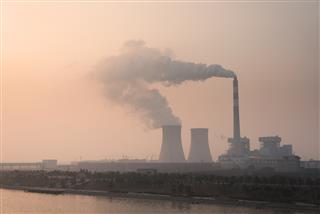
The effects of thermal pollution are primarily associated with the habitat of aquatic organisms, and indirectly, to humans. Learn about this pollution type in a comprehensive manner from the following write-up.
For aquatic organisms, one of the most vital requirements for survival is the ambient water temperature. For us, a change of one or two degrees in temperature, may be a consideration too trivial to attract attention. But the story is different with the organisms which live in aquatic habitats. For them, a mere rise or fall in the temperature of their environment, can be no less than devastating. And this is what is caused by what we are discussing here in this article – thermal pollution. It, in layman language, refers to environmental, and more specifically to human activities because of which, the temperature in a body of water faces alteration. It basically degrades the water quality thus, making it unfit for the creatures who live and thrive in it.
Impact of Thermal Pollution on Living Organisms
- The primary effect that occurs when the temperature of a water body elevates, even by a small degree, is the death of fish, insects, plants, amphibians, and even marine or freshwater crustaceans. The reason behind this is the reduction in the level of dissolved oxygen in the water. Aquatic organisms are not adaptive to readily adjust to sudden oxygen level shifts, and the warmer the water is, the lesser the oxygen it holds. Thus, with oxygen getting diminished, it is obvious that the life span of the organisms would be reduced.
- Most aquatic organisms, with time, have evolved into developing enzymes that can function only in narrow ranges of temperature. So when the water ambient temperature rises with a sudden effect, the metabolic system of such organisms increases. This causes them to consume more food than what is normally required for them. And eventually, this depletes the resources thus, disrupting the stability of the food chain in their ecosystem.
- When thermal pollution continues for a long time, it gradually affects the reproductive systems of the organisms. And not only this, the pollution also makes them susceptible to various diseases.
- Deeper waters can also get affected when their temperature rises. With increase in temperature, dispersion of oxygen is reduced. And this may give rise to anaerobic conditions. And such conditions favor the growth of bacteria.
- Thermal pollution affects the larvae and eggs of fish in rivers. Aquatic juveniles are the least tolerant to abrupt temperature changes.
- Not to forget, extensive migration is one severe outcome of thermal pollution. If a particle species of organism is not hard enough to resist the temperature change in their ecosystem, then it is natural that the species would migrate in search of an environment that would cater to its requirements for survival. Now this migration might not be accepted by the organisms which are already living in the given area. Because, with the rise in population, resources would start getting depleted thus, resulting in the area becoming a bone of contention between the two species.
- It is also important to know that, thermal pollution can also trigger malnutrition in the affected organisms. Increase in the water temperature interferes with enzymes which are responsible for breaking down of lipids.
What Causes this Pollution?
- Use of water as a coolant is the major cause of thermal pollution thus, havoc in the aquarium ecosystem. In setups such as power plants, water is drawn from a nearby source, ran through systems to keep machinery cool, and released back to the source while it is at a temperate higher than what it was before being used. And this water with an elevated temperature, even by a small degree, causes thermal pollution.
- Deforestation is also another major factor behind this type of pollution. With trees and plants being absent, water bodies are directly exposed to sunlight, thus absorbing more heat and raising its temperature.
- Soil erosion is another causal factor. Persistent soil erosion causes beds of water bodies to rise, thereby making them shallower, and more exposed to sunlight.
- Although increase in temperature is a major cause of thermal pollution, even the release of very, unnaturally cold water have significant changes in the fish and macroinvertebrate fauna of the affected water body.
And that would be all on thermal pollution, and about the responsible factors behind it. According to what experts say, initially, these effects may seem to be limited to the aquatic organisms. However, with time, they would contribute to a major environmental catastrophe, which would not keep itself from engulfing every living organism on Earth.







